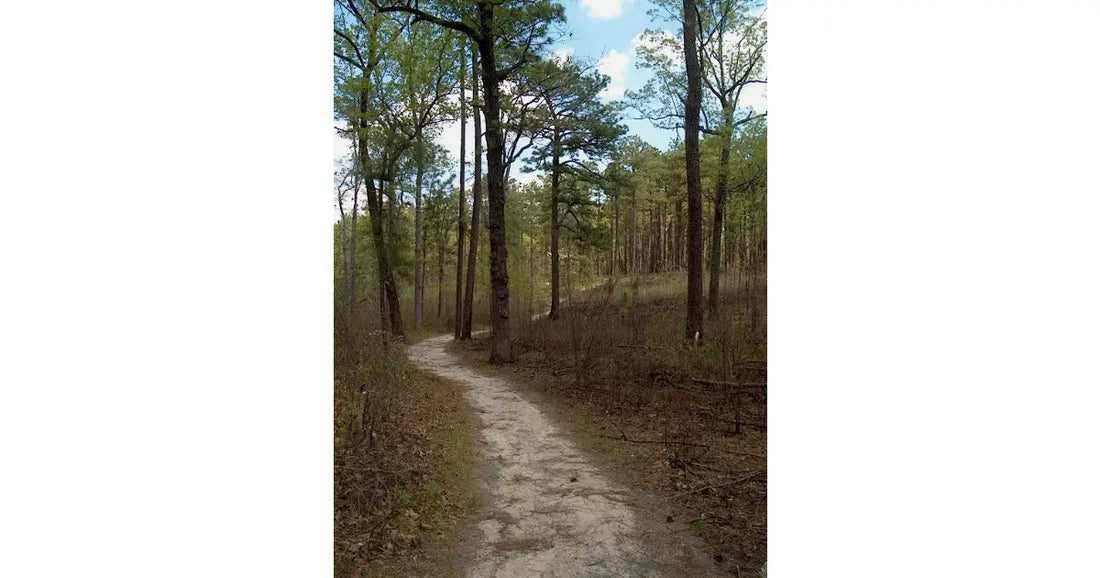Environmental Lessons
The Weymouth Woods-Sandhills Nature Preserve is a 900-acre natural preserve. Located in Southern Pine NC, the park was created in 1963 when the original owners of the land died and donated the land to the State of NC. The original owners bought the land for the intention of stopping the deforestation which threatened the long leaf pines which grow in this area.
There are more than 1,000 species of plant life in the preserve including: turkey and blackjack oaks, wiregrass, longleaf pines, dogwood, red and white oaks, American holly, sourwood, black titi, bay, gum, hickory, yellow poplar, persimmon and red maple. This rich diversity of plant life has created a unique ecology which supports many varieties of mammals, reptiles, and amphibians.
There are more than 160 species of bird including the red-cockaded woodpeckers, pine warblers, Bachmans sparrow, and brown-headed nuthatches. Most of these birds live in the preserve year round but there are many migratory species which live in the park only in the summer during their breeding season. These species include: summer tanager, great-crested flycatcher, prairie warbler and Kentucky warbler. The great horned owl, barred owl and screech owl are also season birds in the preserve (North Carolina State Parks, 2011).
Many amphibians use the lower wet lands and the pine trees as their homes. These include: salamanders and many species of frogs and toads. There are also many reptiles making home of the preserve including Scarlet and hognose snakes, skinks, six-lined racerunners and fence lizards (North Carolina State Parks, 2011).
The majority of the mammals which live in the preserve are nocturnal creatures. These creatures include the raccoon, gray fox, bat, opossum and cottontail rabbit. However, during the day creatures such as Fox squirrels and white-tailed deer can be seen (North Carolina State Parks, 2011).
Most of the creatures in the preserve are dependent upon the longleaf pines and other trees for their survival. This dependence is either indirect or direct. The ecology of the preserve is unique in that the topsoil is sandy and mostly infertile. The trees stretch their roots towards pockets of wetland and rise high into the air seeking sunlight and moisture. As a result the forest floor becomes dry and filled with the decaying leaves and pine needles. This creates an environment prone to fires caused by lightning. The lightning would occasionally strike and create forest fires which would remove or control competing plant life and provide land space for longleaf pines to germinate. The fires would also return nutrients to the soil. As well, minor damaged trees would be used by creatures like the woodpecker to create burrows by digging into burned pockets of trees. This cycle of burning became an important mechanism in the dynamics of this ecology (North Carolina State Parks, 2011).
Due to 20th century fire practices, humans inadvertently damaged the ecology in this area by fighting fires. For several decades fires were fought and controlled and this disrupted the balance of life in the preserve. The result was that competing plant species thrived and inhibited longleaf pines ability to reproduce. This caused the Pine Barrens tree frog to be driven near extinction. As well, the red-cockaded woodpecker also became endangered. This bird could not find refuge in the pines and was unable to flourish for several decades (North Carolina State Parks, 2011).
The fighting of forest fires and the combination of deforestation which took place before the 1960’s severely inhibited and decreased the population of many species of plant and animal. Today, prescribed fires used to simulate natural fires, are periodically set in an effort to maintain at the longleaf pine trees. The protection of the preserve has allowed the forest to continue to grow and maintain its indigenous life. However, in recent years a new problem has occurred. The natural sandy soil of the preserve is prone to erosion. As water ways have naturally and by human intervention been widened by erosion the preserve loses valuable land needed to maintain the wildlife and plant life. Some of this problem has occurred by urbanization and this combined with the natural process of erosion the preserve is once again struggling to maintain it ecology. Efforts are underway in order to combat the erosion problem and studies are being done in other states which maintain the long leaf pines and are facing similar erosion problems (North Carolina State Parks, 2000).
When one looks at the Weymouth Woods-Sandhills Nature Preserve he or she can see how the best intentions of humans often can damage the environment. The fighting of forest fires however well-intentioned created dangerous imbalance in the preserves ecology. This situation highlights the need for more intensive study of ecology before action is taken. Perhaps in the future these situations will be avoided.
References
North Carolina State Parks (2011) Weymouth Woods-Sandhills Nature Preserve » Ecology Retrieved from http://www.ncparks.gov/Visit/parks/wewo/ecology.php
North Carolina State Parks (2000) WEYMOUTH WOODS SANDHILLS NATURE PRESERVE PARK PROFILE http://www.ncparks.gov/About/plans/systemwide/docs/wewo.pdf
By Wyatt Greene — CC BY-SA 3.0
~Citation~
Triola Vincent. Sun, Jun 06, 2021. The Weymouth Woods-Sandhills Nature Preserve Retrieved from https://vincenttriola.com/blogs/ten-years-of-academic-writing/the-weymouth-woods-sandhills-nature-preserve
